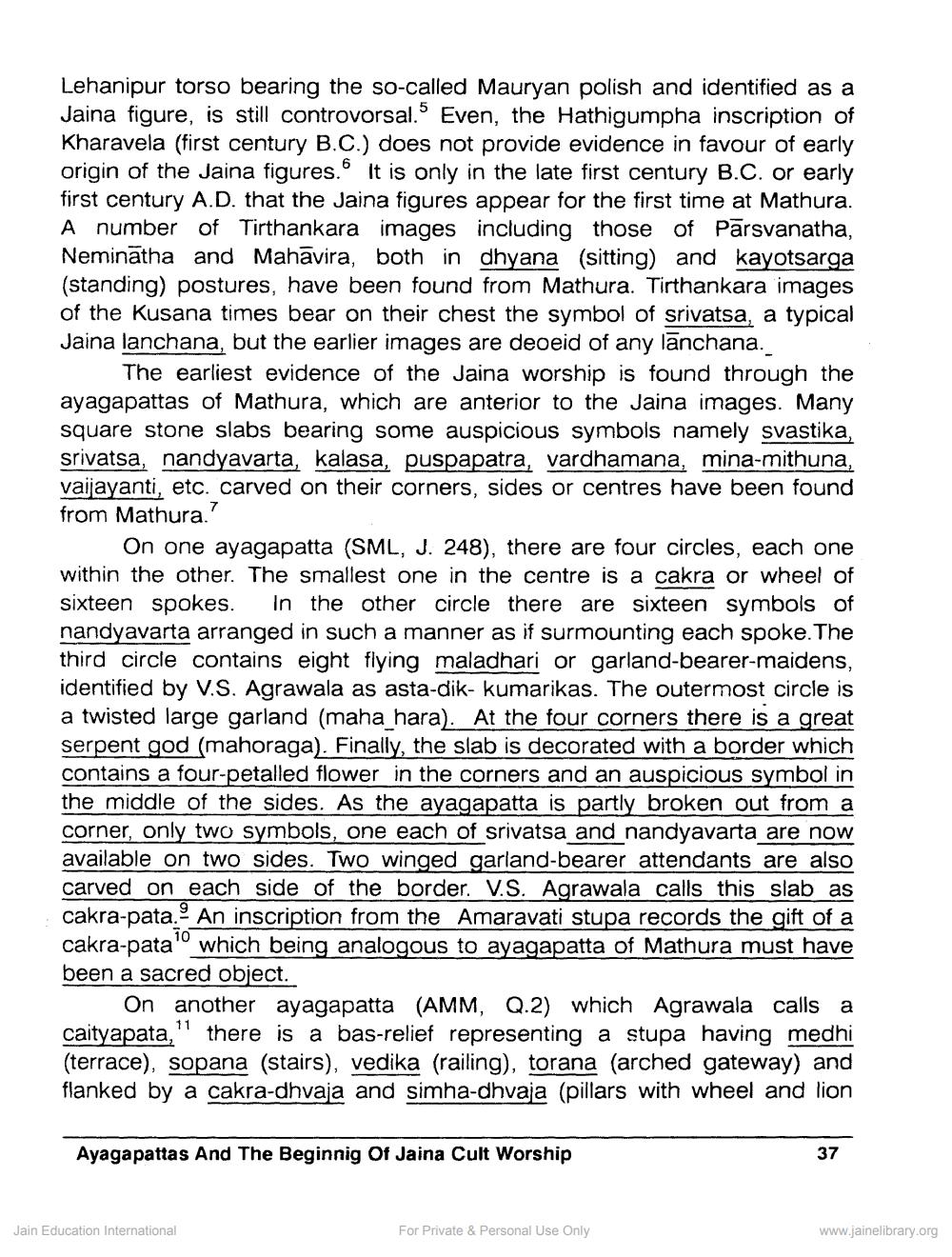Book Title: Ayag Patta and the beginning of Jain Cult Workship Author(s): A L Srivastava Publisher: Z_Vijyanandsuri_Swargarohan_Shatabdi_Granth_012023.pdf View full book textPage 2
________________ 6 Lehanipur torso bearing the so-called Mauryan polish and identified as a Jaina figure, is still controvorsal.5 Even, the Hathigumpha inscription of Kharavela (first century B.C.) does not provide evidence in favour of early origin of the Jaina figures. It is only in the late first century B.C. or early first century A.D. that the Jaina figures appear for the first time at Mathura. A number of Tirthankara images including those of Parsvanatha, Neminatha and Mahavira, both in dhyana (sitting) and kayotsarga (standing) postures, have been found from Mathura. Tirthankara images of the Kusana times bear on their chest the symbol of srivatsa, a typical Jaina lanchana, but the earlier images are deoeid of any lanchana. The earliest evidence of the Jaina worship is found through the ayagapattas of Mathura, which are anterior to the Jaina images. Many square stone slabs bearing some auspicious symbols namely svastika, srivatsa, nandyavarta, kalasa, puspapatra, vardhamana, mina-mithuna, vaijayanti, etc. carved on their corners, sides or centres have been found from Mathura." On one ayagapatta (SML, J. 248), there are four circles, each one within the other. The smallest one in the centre is a cakra or wheel of sixteen spokes. In the other circle there are sixteen symbols of nandyavarta arranged in such a manner as if surmounting each spoke. The third circle contains eight flying maladhari or garland-bearer-maidens, identified by V.S. Agrawala as asta-dik- kumarikas. The outermost circle is a twisted large garland (maha_hara). At the four corners there is a great serpent god (mahoraga). Finally, the slab is decorated with a border which contains a four-petalled flower in the corners and an auspicious symbol in the middle of the sides. As the ayagapatta is partly broken out from a corner, only two symbols, one each of srivatsa_and_nandyavarta are now available on two sides. Two winged garland-bearer attendants are also carved on each side of the border. V.S. Agrawala calls this slab as cakra-pata. An inscription from the Amaravati stupa records the gift of a cakra-pata10 which being analogous to ayagapatta of Mathura must have been a sacred object. On another ayagapatta (AMM, Q.2) which Agrawala calls a caityapata, there is a bas-relief representing a stupa having medhi (terrace), sopana (stairs), vedika (railing), torana (arched gateway) and flanked by a cakra-dhvaja and simha-dhvaja (pillars with wheel and lion 11 Ayagapattas And The Beginnig Of Jaina Cult Worship Jain Education International For Private & Personal Use Only 37 www.jainelibrary.orgPage Navigation
1 2 3 4 5 6 7 8 9 10
